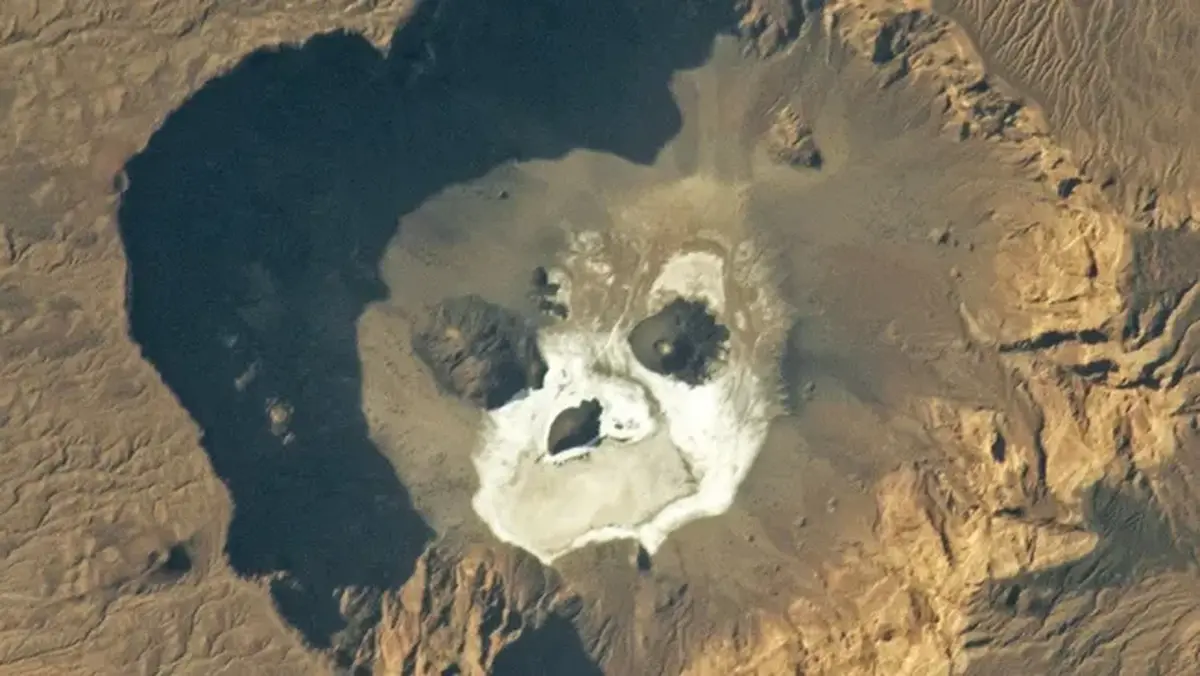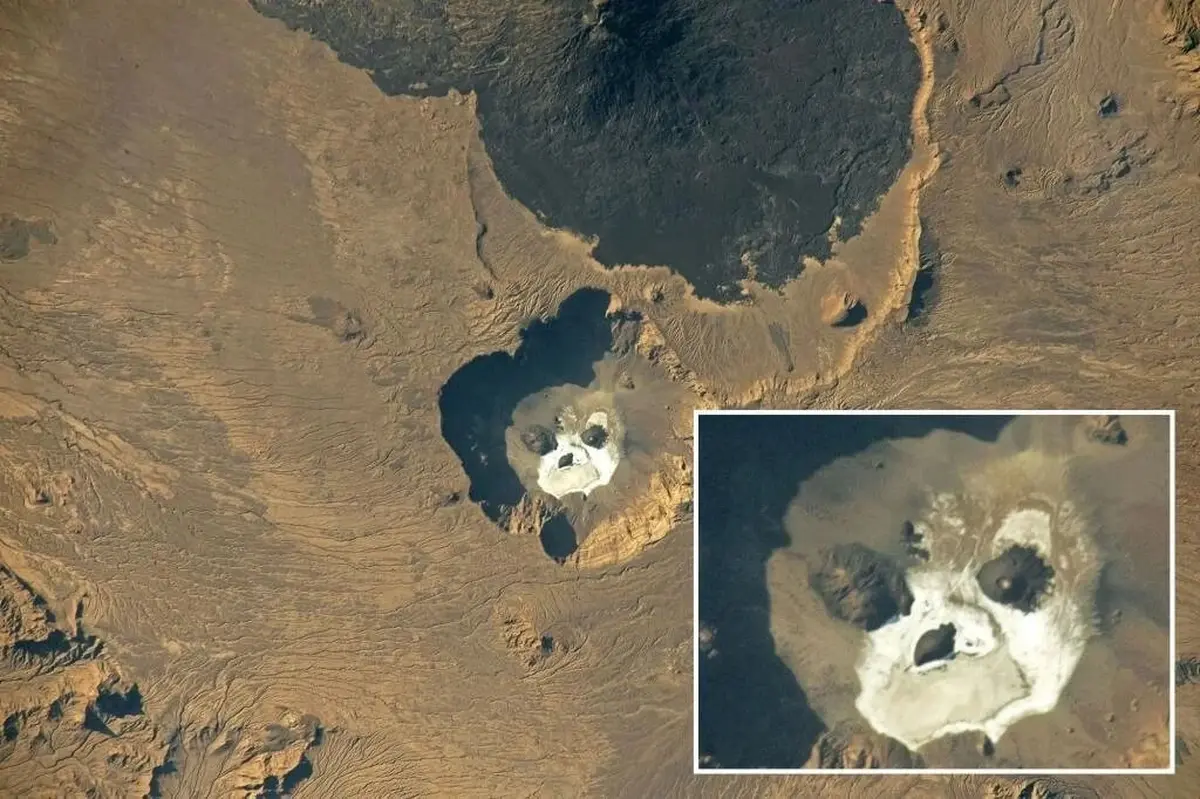 What resembles a skull is located in northern Chad, at the bottom of the Tru-o-Natron volcano, also known as Dun-Orey: a volcanic caldera, or , measuring 1,000 meters across.
What resembles a skull is located in northern Chad, at the bottom of the Tru-o-Natron volcano, also known as Dun-Orey: a volcanic caldera, or , measuring 1,000 meters across.
According to NASA’s Earth Observatory , this massive volcanic pit formed as a result of a powerful eruption hundreds of thousands of years ago. It sprawls in the heart of the Tibesti mountain range, which stretches 480 kilometers, linking the center of the Sahara Desert, Chad, and Libya.
From space, the bottom of the caldera strikingly resembles a skull. However, from the ground, it appears quite ordinary, as reported by Live Science.
When viewed through the eyes of an astronaut who captured the ‘skull’ in 2023, one can discern a mouth, nose, and white cheeks. This coloration is due to the influence of a natural mixture of decahydrate sodium carbonate, sodium bicarbonate, sodium chloride, and sodium sulfate. This salty mixture is extremely layered and resembles cracked paint.
Meanwhile, the areas around the eyes and nostrils are formed by scoria cones. These steep conical hills have developed around volcanic vents, rising above the rest of the crater floor. The darker area to the left of the face is a shadow cast by the high rim of the caldera, giving the skull its distinctive shape.

Today, Tru-o-Natron is devoid of signs of life, but researchers assert that there was once a glacial lake here. In the 1960s, scientists discovered fossils of marine snails and plankton dating back 14,000 years beneath the salt-crusted floor of the quarry. In 2015, another expedition stumbled upon algae fossils that were as much as 120,000 years old.
Since its formation, the caldera has been in a state of volcanic dormancy. It is located near Tarso-Toussied, a large volcanic formation covered in solidified lava. Here lies a stratovolcano, which, according to the Smithsonian Institution’s Global Volcanism Program, is still considered active, although it hasn’t erupted in over 12,000 years.
Interestingly, Tru-o-Natron is not the only volcanic structure that resembles a skull from space. In Nicaragua, on the Chiltepe Peninsula, which “floats” in Lake Managua, there are two volcanic lakes, each situated in its own caldera. When viewed from space, this area also reveals a skull-like shape.
Photo: NASA
From the giant basin in the Sahara, an angry “skull” emerges.
0
